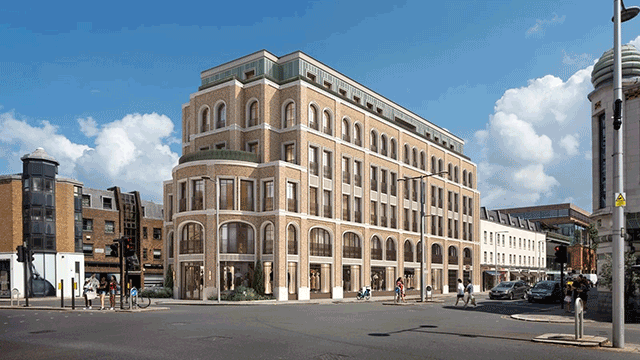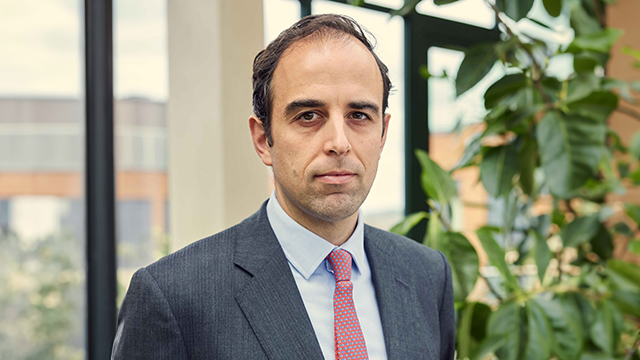The top 50 collaborators in real estate, as decided by the EG team and a panel of judges, showcases those in the industry working hard together with peers, politicians, the public and technology to deliver an improved public realm and property sector.
In partnership with GVA, U+I, Mishcon de Reya and Mount Anvil
50The EU
In what is perhaps the last year (at the time of writing) that the UK remains a member of the EU, it is only right that we celebrate the union as one of the Top 50 Collaborators. Free movement of people has helped create a workforce for the industry and quite literally built the environment around us.
49MIPIM
Hosted in Cannes each year, there is no denying that MIPIM is both a hub for collaboration and a collaboration in its own right. Over four days (and nights), it brings together minds from across the property industry: agents, investors, developers, lenders and local authorities. It’s a chance to interact with people from all over the world and conclusively secure deals.
48Countryside Partnerships South
Countryside has been developing partnerships for more than 35 years and, to date, it has completed 36 estate regeneration schemes through its partnerships division, with a further 15 under construction. The group says: “We work with our partners as one team to achieve the same objective and carry out regular workshops, steering groups and meetings to establish strong and collaborative working relationships. We understand each partner’s position and work to resolve issues together, ensuring that we meet the development programme to deliver successful and sustainable projects.”

47The Westgate Oxford Alliance
This joint venture between Landsec and the Crown Estate has delivered the £440m, 800,000 sq ft Westgate in Oxford. The developers say collaboration was the key to the success of the project, which has increased visits to the city by more than 1m year-on-year. Westgate is estimated to have created £738m of gross economic value, with construction alone creating 1,000 jobs. Landsec worked with Aspire Oxford to create an employment programme helping ex-offenders and the long-term unemployed into jobs.
46Changing the Face of Property
A collaboration between firms that are usually in competition with each other such as JLL, CBRE, Knight Frank, Savills, Cushman & Wakefield and many more. The aim is to promote property as an exciting career choice for the next generation.
45UKGBC
As one of the biggest contributors of CO2 emissions, it is only right that the built environment works together to find ways to enable the planet and its people to thrive. And that is exactly the mission of the UK Green Building Council.
Since its launch in 2007, the UKGBC has grown to a membership of more than 400 and offers clarity, cohesion and leadership to a disparate sector as it campaigns to deliver a sustainable environment. And while it is always difficult to quantify the work of bodies such as these, there is no doubting the steps many of its members have made.
And in a world that is rapidly being depleted of its natural resources, it is only right the UKGBC is rewarded as one of our Top 50 Collaborators.
44UCEM
In a bid to examine why the skills shortage across the UK’s built environment sector has reached crisis levels, the University College of Estate Management has brought together the RICS, Chartered Institute of Building, Construction Industry Training Board, Building Research Establishment and the cabinet office to create an overarching leadership body for skills.
It will focus on developing a long-term skills roadmap for the built environment and a sustainable model of skills supply that is not at the mercy of changing economic fortunes. It will also focus on implementing a shared careers and education framework. UCEM has agreed to fund the new body for at least its first year.
UCEM chief executive Ashley Wheaton says: “This is an industry problem and we need to come together to sort it out. There needs to be a willingness to participate in something that is bigger than each individual factor. Today the sum of the parts is less than the whole and we cannot afford that. We have a big problem to solve.”
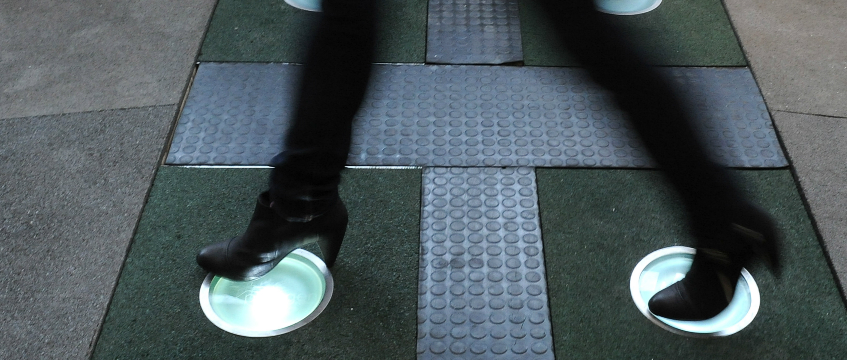
43Pavegen and Siemens
This year, energy and data harvesting firm Pavegen teamed up with global engineering firm Siemens to bring its intelligent floor tile to smart city projects around the world. Pavegen creates interactive flooring that converts the kinetic energy of footfall into off-grid electricity, data and rewards.
It has so far delivered more than 200 installations around the world, including at Westfield London and, most recently, Hollywood Boulevard in Los Angeles. Together, Pavegen and Siemens will target airport infrastructure, mixed-use developments and hospitals as part of their plan to deliver smart city technology around the world.
42Landsec and Bounce Back
Collaboration has to be celebrated when it not only does good and adds value to a situation, but also provides real skills needed for the real estate market. It is the reason Landsec has secured its spot in The Collaborators for its work with Bounce Back.
The REIT first teamed up with the charity to teach scaffolding skills to inmates at Brixton Prison, preparing them for the world of work on their release. More recently it has launched an academy to teach offenders at HM Prison and Young Offenders Institute Isis in Greenwich to become qualified aerial window cleaners.
SEE ALSO: Landsec launches window-cleaning course for prisoners
41Build To Rent: A Best Practice Guide
While a guide itself may not sound like a collaboration, the way this highly useful publication came about is a reflection of how the industry is working better together. The Urban Land Institute’s best practice guide was the combined work of 50 people from across the built environment who volunteered their time and expertise for the greater good of the industry. Some 2,000 copies have now been sold, raising money to help the ULI continue its mission of providing leadership in responsible land use and creation of thriving communities worldwide.
40London Cancer Hub
In Sutton, south London, the council has brought together the Epsom & St Helier University Hospitals Trust with the renowned Institute of Cancer Research and the Royal Marsden NHS Foundation Trust to bring forward the London Cancer Hub – a 3m sq ft life sciences district that will specialise in cancer treatment.
The project was initiated by Sutton Council, which was looking for ways to generate more economic growth in the borough and realised it already had two of the leading bodies in cancer research in the town. The search is now on for an investor or development partner to deliver 1m sq ft of commercial research and development and life science space.

39Vilnius
One of two European cities to make the Top 50. Vilnius, Lithuania’s capital, has turned collaboration on its head and transformed itself into the capital of open data. Its focus on openness is borne out of the understanding that for cities to be liveable places for the future, developers, planners and authorities need to be smarter at collecting and reacting to data.
38BIM
BIM, or Building Information Modelling, is increasingly facilitating collaborative working in the design and construction industry. BIM creates a digital model of a building that enables all players to make better decisions throughout the design, construction and operation stages of a building’s life.
37National Homelessness Property Fund
Social impact investment company Resonance teamed up with charity St Mungo’s to launch the National Homelessness Property Funds: three operational funds with assets totalling £155m.
The funds own residential properties in Bristol, Oxford and Milton Keynes that are let to individuals and families who have been homeless or are at risk of homelessness.
Close to 1,400 individuals have been found homes in the properties, which are managed by St Mungo’s social lettings agency Real Lettings. Local authorities in the three cities have each invested £5m, with a further £15m from Big Society Capital.
The collaboration has now also achieved B Corp status, a certification for businesses that balance purpose with profit and puts a legal requirement on them to consider the impact of their decisions on their workers, customers, suppliers, community and the environment.
With further growth planned, the funds are an example of how collaboration between real estate, the public sector and charitable world can create real change.
36Unibail-Rodamco Westfield
The most successful merger of two retail giants in summer 2018 was French group Unibail-Rodamco and Australian shopping centre owner Westfield. The £18bn merger is so far paying dividends (unlike the other failed retail merger), with NAV, footfall and net rental income all showing growth in its first set of results. In a time when more retail is definitely not what you want, this partnership seems to be bucking the trend.
SEE ALSO: Unibail-Rodamco boss outlines Westfield merger vision
35Urban Splash and Places for People
The award-winning joint venture between Urban Splash and Places for People began in 2013 with the goal of transforming brownfield sites across the country. So far, some 300 homes have been delivered with a further 1,800 in the pipeline.
34Pathways to Property summer school
The University of Reading, British Land and the Sutton Trust run a free summer school. Aimed at year 12 students from state schools and colleges nationwide, they aim to advertise careers in real estate. Lectures, mentoring and bursaries for further education are all part of the service.
33Bruntwood and Legal & General
Bruntwood and Legal & General Capital have teamed up to develop a network of science and technology hubs around the region. The joint venture is targeting science and technology occupiers with an initial £1.8bn of projects.

32Club Peloton
It may seem strange to include a company that organises charity cycle rides in a Top 50 Collaborators list, but the producer of the annual Cycle to MIPIM, Cycle to Mapic and PedElle rides (above) is an example of what the industry can do when it works together for one cause. This event has created businesses, business relationships and friendships.
Its events create a level playing field for everyone, regardless of their age, gender, race or seniority in a business. The “all for one” ethos creates a team with a single focus: to pedal and raise as much money for principal charity Coram. Now that’s collaboration.
31Real Estate Balance Toolkit
Women’s networking membership group Real Estate Balance has worked with the industry to develop an online toolkit offering companies and individuals resources, research and best practice advice to help them “build better-balanced businesses”.
The toolkit helps senior teams recognise the issues surrounding diversity, encourages staff to challenge attitudes that prejudice women and focuses on creating workplaces with fair and objective recruitment and promotions.
30Ekkist with Studio McLeod
Design consultancy Ekkist teamed up with architect Studio McLeod to create Ori House, the UK’s first wellbeing concept house. They worked together to utilise the latest tools and knowledge to deliver the most healthy house possible.
The pair brought together the best materials, construction methods and technologies to deliver a house based on WELL Building Standard principles.
Ori House has since received international recognition for bringing together two innovative practices to create the first wellness design offering for the prefabricated housing market.
29PiLabs
All good progress comes from great collaboration and as one of the first to start to invest in proptech and provide a space for young entrepreneurs to get together to learn how to grow and develop their businesses, it is only right that PiLabs makes the cut. So far, the investor/accelerator has helped more than 35 companies.
SEE ALSO: PiLabs’ Dominic Wilson’s five tips for tech success
28Tibbalds Planning and Urban Design team
A team comprising five women who cemented their relationship while taking part in the annual Club Peloton PedElle cycle rides got together to pitch for – and ultimately win – one of the biggest sustainable placemaking competitions in the country.
The PedElle ride is designed for women across the built environment to build both confidence on the bike and connections with potential business partners. And it has done just that, with Tibbalds Planning and Urban Design pulling together a specialist team for the Cambridge to Oxford growth corridor competition.
The women – Tibbalds director Jennifer Ross, Mikhail Riches co-director Annalie Riches, Petra Marko, co-founder of Marko & Placemakers, Sarah Featherstone, co-director Featherstone Young, and Khaa founder Kay Hughes – have shown their collaborative skills in the peloton and will now do the same with their plans to boost the development of housing, public realm and infrastructure within the 210km linear area spanning Cambridge, Milton Keynes, Northampton and Oxford.
27Stowga
Launched as the “Airbnb of the logistics sector”, finding vacant space within operating units for smaller firms, Stowga has enabled logistics businesses and operators to collaborate and utilise space, creating income for occupiers with unused space and providing other firms with access to logistics units in an undersupplied market. The business secured investment from CBRE and is preparing for its next stage of growth with global expansion.
26Roeselare
The other European city to make it on to the Top 50 Collaborators list, Roeselare shows us how proper collaboration has positive results. This Belgian city of around 60,000 inhabitants implemented an ignored plan (the first Grimsey Review) to save the UK’s high streets and resurrected a dying retail sector.
Led by its enterprising mayor, Roeselare provided free parking, started fining landlords for leaving shops vacant and implemented low business rates. The result? 30 new shops have opened in three years. The changes were facilitated by collaboration between the local council and retailers.
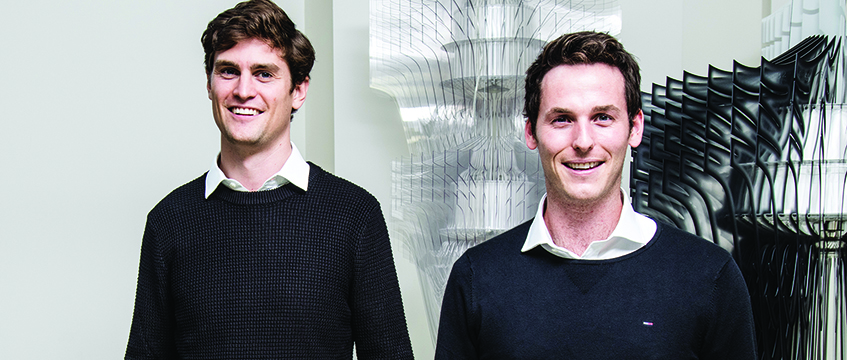
25WiredScore
The US-born but globally expansive firm, led in the UK by William Newton and Tom Redmayne, is on a mission to bring connectivity to the built environment and celebrate those that are doing it well. Collaboration only happens when there is connectivity.
24New West End Company
This collection of policymakers, civic supporters, businesses, property developers and management groups worked together to get one of the UK’s first property owner Business Improvement Districts instated. The new BID got an unprecedented 96% approval vote and is now working to invest tens of millions of pounds into London’s West End, enabling it to retain its world-class status.
23Transport for London
A regular fixture on The Collaborators Top 50 and a past winner of the EG Collaborators Award, Transport for London continues to work in partnership across the industry to deliver usable spaces to the community.
From its partnership with Appear Here, which transformed Old Street station, to its collaboration with the New West End Company to create the world’s smartest street just off Oxford Street, W1, this government-owned transport body is no stranger to a partnership.
And this year it has launched new collaborations in a bid to provide much-needed housing in the capital, with proposals to partner with the private sector to deliver some 3,000 built-to-rent homes and through a jv with residential developer Apartments for London to build 450 homes over car parks and other available sites on TfL land.
22Fifth Wall
Fifth Wall, a pure proptech VC run by former Blackstone advisers Brendan Wallace and Brad Greiwe, hit the headlines in May last year, raising $212m (£160m) from a consortium of real estate investors including CBRE, Hines and Prologis.
In a collaborative approach to investing, Fifth Wall will focus on tech that is actually usable for its investor base. Greiwe says: “We realised that if we could go out and raise capital from the biggest buyers of real estate technology then we would know what they would be likely to adopt and who they would be likely to partner with.
“We would therefore be able to rapidly accelerate the growth of our portfolio companies with that visibility and would have the ability to view the entire market from the perspective of what the incumbents want, rather than speculate on what is going to be adopted.” Smart. Collaborative.
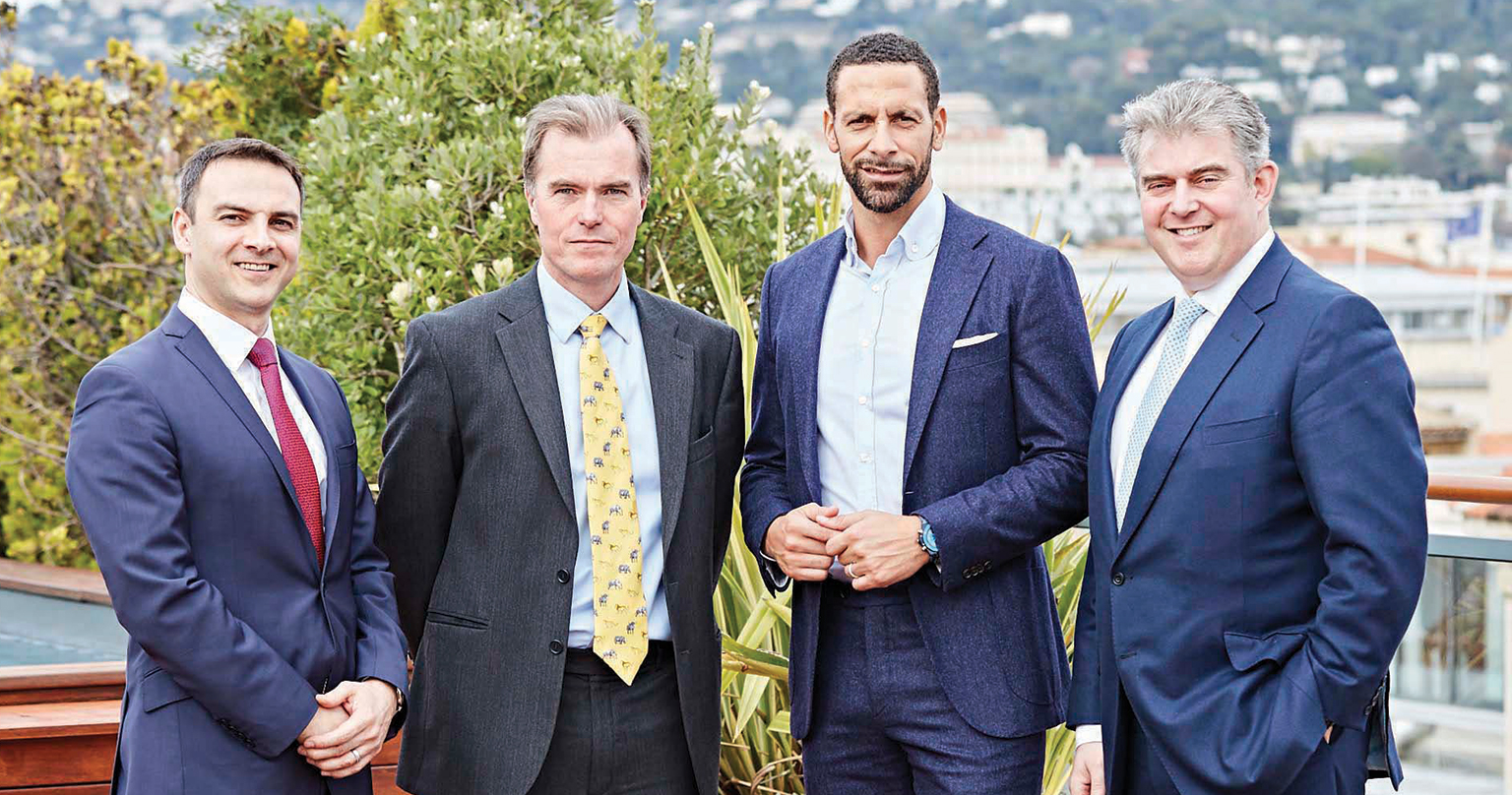
21Rio Ferdinand, Mark Noble & Bobby Zamora
This trio makes the list more for promise than progress. They have been working up a sports-led, mixed-use regeneration scheme in Houghton Regis, Bedfordshire, with Aviva Investors and Colliers International. With the prime minister pledging to make social housing a priority, theirs is an innovative model that just might score.
20BNP Paribas Real Estate and Strutt & Parker
Towards the end of last year, we finally got confirmation of the marriage we had long been waiting for. No, not Prince Harry and Meghan Markle, but BNP Paribas Real Estate and Strutt & Parker.
It was a flirtation that had been talked about at several MIPIMs but always denied. But in August 2017, the two companies finally confirmed they were indeed merging.
There is no denying BNP Paribas Real Estate has struggled to establish itself as a major player in the UK market. Or that despite splashing the cash (not always successfully) on big hires over the years, it has failed to become as recognisable a brand as its peers. The merger with Strutt & Parker is intended to turn the business into a truly global and universally recognised player.
A little over a year since the pair finally tied the knot, it is still hard to say if it will be a marriage of convenience with little impact on the UK market, or a more passionate affair that will continue to grow its family and its spread across the country.
SEE ALSO: Strutt & Parker’s partners pocketed £84m in sale to BNP Paribas
19Nigel Hugill and Robin Butler
It wouldn’t be a collaborators list without this duo: the original collaborators. For more than two decades they have been instrumental in some of the biggest regeneration projects across London – White City, Greenwich Peninsula and Stratford – and are now, through their Urban & Civic vehicle, doing the same across the regions.
18Pocket Living and Homes England
Pocket Living, the developer of smaller (and therefore affordable) homes, has been working closely with the Homes & Communities Agency (now called Homes England) to deliver its concept to more people. With funding from the HCA, the mayor of London and Lloyds Banking Group, it now has £150m to build 1,000 homes in the capital. The housebuilder’s latest deals demonstrate the role private and public organisations can have in tackling the housing shortage.
17Hyde and Mount Anvil
Mount Anvil and Hyde Housing teamed up to get on the TfL development panel. They are not the only HA/propco partnership on there, but they are a great example of how the two sides can work together. Hyde uses Mount Anvil to find new schemes around the capital. Mount Anvil uses Hyde for up-front finance and to de-risk schemes. Together they provide residential developments with a decent percentage of affordable housing and no fuss.
16David Lunts and Jules Pipe
David Lunts is head of housing and land at the Greater London Authority and has been through not one but three London mayors. He is a man who really knows London, and it is his latest collaboration with the deputy mayor for planning and regeneration, Jules Pipe, that has given developers in the capital confidence in the incumbent administration. With mayor Sadiq Khan showing little interest in engaging with the real estate sector, having someone in place who knows the city and how the administration works is vital.

15Radius Data Exchange
Never before has the entire agency community agreed to share its data with each other. But in April 2018, the top firms all agreed that sharing data meant better data and better service for clients. While still in its infancy, Radius Data Exchange is bringing an entire community together to deliver – for the first time – the most comprehensive coverage of the UK commercial real estate market.
SEE ALSO: Radius Data Exchange powers up as major agents commit
14WeWork and Amazon
Two major disruptors of the real estate industry are now working together and it is – or at least should be – making other office operators nervous. Two of the biggest and most active users of commercial space, these two businesses have now started to do deals together. Amazon leases a building and then hands over the space to WeWork to fit it out and manage it. The flexibility of the WeWork model enables Amazon to grow and shrink as and when it needs to. A collaboration of two giants that may just have a lasting impact on the built environment as a whole, forcing traditional office providers to be much more flexible in their offerings if they want to secure tenants.
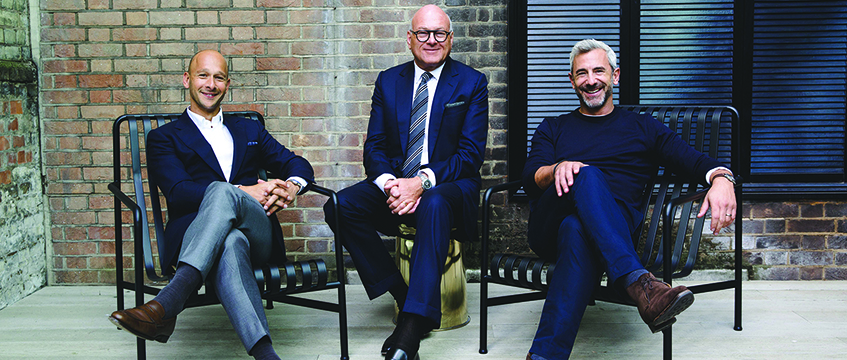
13The Office Group (and Blackstone)
The UK’s disruptive homegrown serviced office provider was already a powerful force in the industry, but Blackstone’s £500m takeover of the business in June 2017 has given it a turbo-boost. Not only does TOG epitomise collaboration in the very space that it provides, but the new investment from Blackstone opens up a potential collaboration with the world’s biggest real estate investor to see it featured in many of its global properties.
12John Burns and Simon Silver
This duo has been called the shrewdest, wisest and most active team in property. In three decades, they have taken Derwent London from a £1.5m cash shell to one of the most respected and coolest London developers with a market capitalisation of £3bn. And in doing so, they have transformed fringe areas of the capital into sought-after destinations.
11Moda and Uber
Taxi disruptor Uber and PRS developer Moda Living have teamed up to try to reduce road congestion and free up surplus development land. The proposed partnership will see tenants of Moda’s future developments offered up to £100 of Uber credits per month if they agree to give their parking space back to the developer, which has more than 6,000 homes in its pipeline. The concept will be trialled at Moda’s 466-home Angel Gardens in Manchester.
10Argent Related
Since the developers behind the transformation of London’s King’s Cross, N1, and Hudson Yards in New York City came together in March 2015, this collaboration has won projects that will see it deliver more than 7,500 new homes across London and transform Tottenham Hale, N15, and Brent Cross, NW2. And the jv is now readying itself for the next stage of growth, seeking to become the “greatest property developer and operator in the world” with a new chief executive.
SEE ALSO: New guard as ambitions grow at Argent Related
9VTS
This tech solution to managing portfolios has enabled companies to create one place where teams can work and communicate, whether at their desks or on the go. By centralising portfolio data, the VTS system claims it can reduce cycle time by 41%. Not only a collaboration in bringing data together but also allowing teams to work together through one portal has helped secure VTS a high ranking in this year’s Top 50.

8Ballymore and Oxley
Two very different developers that have come together to deliver projects in the UK and Ireland. Oxley is one of the largest developers in Singapore, while Irish Ballymore is one of London’s largest residential developers. The pair have transformed a former brownfield site in the heart of London’s Royal Docks into a 3,385-home scheme. The first residents moved into Royal Wharf in 2017, with completion of the £1.5bn scheme scheduled for 2020.
7English Cities Fund
An innovative collaboration between central government, an institution, a developer and local authorities. English Cities Fund is a jv between Muse Developments, Homes England and Legal & General. Established in 2001 to identify and break through barriers to institutional investment, so far EcF has brought forward five projects in Liverpool, Salford, Wakefield, Canning Town and Plymouth, delivering 900,000 sq ft of commercial space, 1,400 new homes and 143 hotel rooms. The jv partners recently agreed to double the size of the fund to £200m and extend its life to 2026 in order to take on more projects.
6Innovation Gateway
The Innovation Gateway is an alliance of leading organisations working to reduce the operational costs, risks and environmental impact of their buildings.
They are leveraging their collective learnings and built environment expertise to transform the performance of their properties at scale.
The alliance includes Tesco, Heathrow Airport and Royal Bank of Scotland and is working together to share best practice and performance data and is adopting innovation to address common challenges.
Instead of relying on limited internal or supplier expertise, or participating in confined industry events, the partners have together improved their ability to source, select and validate innovation to address the areas with the greatest potential impact.
Each of the partners are involved in identifying key challenge areas, sharing experience, evaluating the sourced innovations and sharing the performance data from pilots to enable all partners to mutually benefit. Since 2014, the partners have sourced more than 600 innovations from around the world.

5Develop Croydon
Croydon has come a long way over the past eight years, with £1m penthouses, a Boxpark, growing office rents and, finally, commitment from John Lewis to open a store there.
The south London town’s development has been driven by Develop Croydon, which has managed to bring together 67 members to enable its £5.25bn regeneration programme.
In 2010, Croydon was struggling with two major issues: the downturn in the economic climate coupled with the long-term decline of a borough suffering from a perception of neglect. The Develop Croydon forum was created to try to change this perception and drive the town’s regeneration by bringing together public and private sector stakeholders.
4Built-ID
Built-ID – a collaborative tool that enables members to identify project teams behind properties and showcase their work to an international audience – continues to grow and develop. Since securing £1.1m in funding from investor giants including Nick Leslau last year, the business has created a community of its own and is now using its collaborative approach to the built environment for community benefit.
The start-up has been testing a new app, available to developers, which allows the public to have a meaningful and sustained conversation around development and regeneration. This business continues to move up the rankings in the Top 50 Collaborators and once its new app is implemented more widely, we expect it to move even further up the list.
3Freehold
In a sector that lags behind most others when it comes to diversity and inclusion, one industry body has had a lasting impact. Freehold, a network set up exclusively for the real estate industry, now has a membership of more than 1,200 surveyors, valuation surveyors, agency surveyors, asset managers, architects, developers, investors and property lawyers from both the public and private sectors.
Backed by the charity Stonewall, it is a unique networking forum for lesbian, gay, bisexual and transgender real estate professionals.
When Freehold’s founders, Taylor Wessing’s Saleem Fazal and TFT’s David Mann, launched the group in 2011 they sought advice from large employers, only to be met with responses that varied from “we don’t have any gay employees” to “we don’t have a problem; we are a completely inclusive business”.
However, Freehold’s early joiners told a different story: of not being out at work for fear of career limitation, office “banter” verging on bullying and the strain on their wellbeing of feeling “different” and not bringing their whole self to work. Through their work with the industry, things have improved massively.
Freehold now stages regular events hosted by leading industry players where support is offered, lasting friendships formed, and business opportunities created.
Other sector-specific or regional LGBT networks have sprung out of Freehold, including Planning Out, Open Land and Off Site. Key employers such as CBRE, JLL, Savills, Cluttons, Knight Frank and Cushman & Wakefield have started their own internal diversity networks following colleagues meeting at Freehold events.
And it is a contributor to diversity initiatives by key industry bodies such as RICS, RIBA, RTPI, BPF and Revo.
With a mentoring scheme that has benefited more than 50 people, many mentees and members are now industry LGBT role models for the next generation.
Of course, real estate still has some way to go, but forward-thinking employers are now accepting that all forms of inclusion is a priority that will help them attract and retain talented staff.
Reflecting the communities this industry serves is now a prerequisite for many in the property sector and many clients are insisting their supply chain has the same values as them. Freehold has been instrumental in this sea change, so this year takes a well-deserved third place.
2West Midlands Combined Authority
In March this year, the WMCA secured a £350m housing deal with Westminster. A package of funding that will deliver infrastructure to support the development of sites across the West Midlands, including the Commonwealth Games Athletes’ village and associated development in the Perry Barr area of Birmingham; Coventry Ring Road Junction 7 and UK Central development at Balsall Common in Solihull.
The deal also includes a land fund of £100m to buy and clean up land around priority sites, focusing on the Walsall to Wolverhampton corridor, to deliver at least 8,000 homes, plus commitment from government to work with housing associations on new ways to finance and build affordable housing to rent or buy in the West Midlands.
But the deal can only work through collaboration and a joint delivery team has been set up with Homes England to ensure homes are delivered on time and a pipeline of high-priority sites are developed.
For the WMCA, the housing deal was the first step in an ambitious programme of joint work and investment between the West Midlands and government to deliver its ambition of 215,000 new homes by 2031.
1Recruitment & Skills Centre Partnership
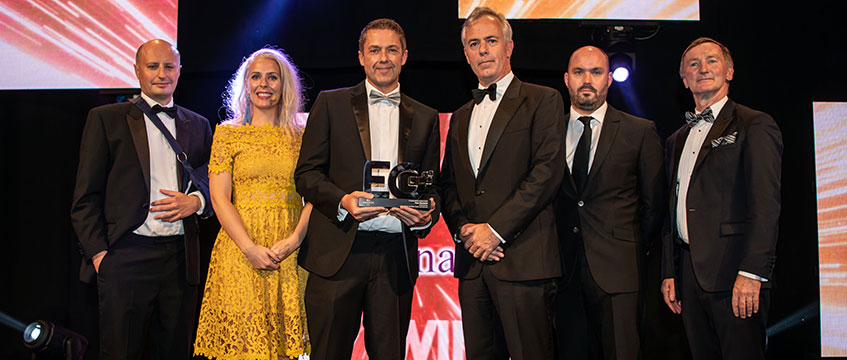
Collaboration comes in many shapes and sizes. Especially in the built environment.
Collaboration doesn’t have to be about the actual bricks and mortar of a development, it doesn’t have to be about physical regeneration. Sometimes it is about how the built environment can work with a community to make a difference to society.
And although the winner of the EG Collaborators Award this year and the holder of the number one slot in our Top 50 may be small, the impact it has had is anything but.
The Recruitment & Skills Centre Partnership at Fort Kinnaird, just outside Edinburgh, is an innovative private and public sector partnership based at British Land’s 800,000 sq ft Fort Kinnaird shopping park.
The collaboration brings together many different organisations with the aim to grow local skills and open access to jobs for the benefit of local people, businesses and the economy.
And it couldn’t be better placed to achieve its goal. The Portobello/Craigmillar area of Edinburgh, where Fort Kinnaird is located, is one of Scotland’s most deprived areas. Some 28.5% of local people have no qualifications and 7.4% have either never worked or are classified as long-term unemployed.
The RSC is trying to turn those figures and the fortunes of those who live in the area around. And to do so, it is working with both the public and private sector.
British Land, as owner and asset manager of Fort Kinnaird, provides RSC with free space from which to operate, gives access to other employers on the park and provides funding and other support to the initiative.
The REIT has also encouraged retailers at the park to get involved with the scheme and, as such, they have provided work experience, guaranteed interviews and provided jobs.
The RSC also collaborates with the public sector, with Edinburgh’s Joined up for Business partnership and other local partners, including the City of Edinburgh Council, East Lothian Council, Midlothian Council, Business Gateway, Capital City Partnership, DWP Jobcentres and Skills Development Scotland, providing funding and other in-kind contributions.
Support for jobseekers includes a full-time Jobcentre team member at the RSC, pre-employment training, work experience, expert support with CVs, applications and interviews, and unique access to local employers.
The RSC also works with local schools, supporting careers advisers and teachers in giving students valuable insights and experience of work.
Since its establishment five years ago, the RSC has had more than 8,400 jobseekers and trainees use its services and facilities, has helped more than 3,500 people into jobs – with 48% of seasonal jobs secured becoming full-time roles – and has upskilled more than 2,600 people.
It says that by offering all these support services in one place, the RSC can help people overcome significant barriers to employment, including physical and mental health challenges, long-term unemployment and lack of work experience and skills.
The City of Edinburgh Council has estimated the economic value of the RSC providing just 771 unemployed people with training and supporting them into jobs – based on benefit savings and tax contributions alone – at around £1.6m.
The numbers speak loud enough for themselves in terms of showing how collaboration can have a massive and positive impact on a community. That would ordinarily be enough to catapult a scheme such as the RSC into the top rankings in the Collaborators listings, but the fact that the RSC wants others to replicate its model so that they too can help turn around the fortunes of deprived areas such as those around Fort Kinnaird shows how it has taken collaboration to its very core.
As our Collaborators’ judges said, the Recruitment & Skills Centre partnership is an example of “true collaboration, especially in number and complexity” that has delivered and continues to deliver amazing results.




